Glyn Harper’s and Maria Gill’s latest books are both part of the final year of publishing in commemoration of the centenary of WWI. Bobby the littlest war hero, for 4- to 8-year-old children, is about a canary in the tunnels during WWI, who was used to alert tunnellers to the build-up of dangerous gases, saving their lives. Anzac Animals is for 8- to 12-year-olds, featuring 20 stories about animals that went to war, including mascots and working animals from WWI and WWII.
Maria and Glyn ask each other questions about their books, why they chose to write animal war stories, how they picked the animals, and the difficulties they had while researching the stories.
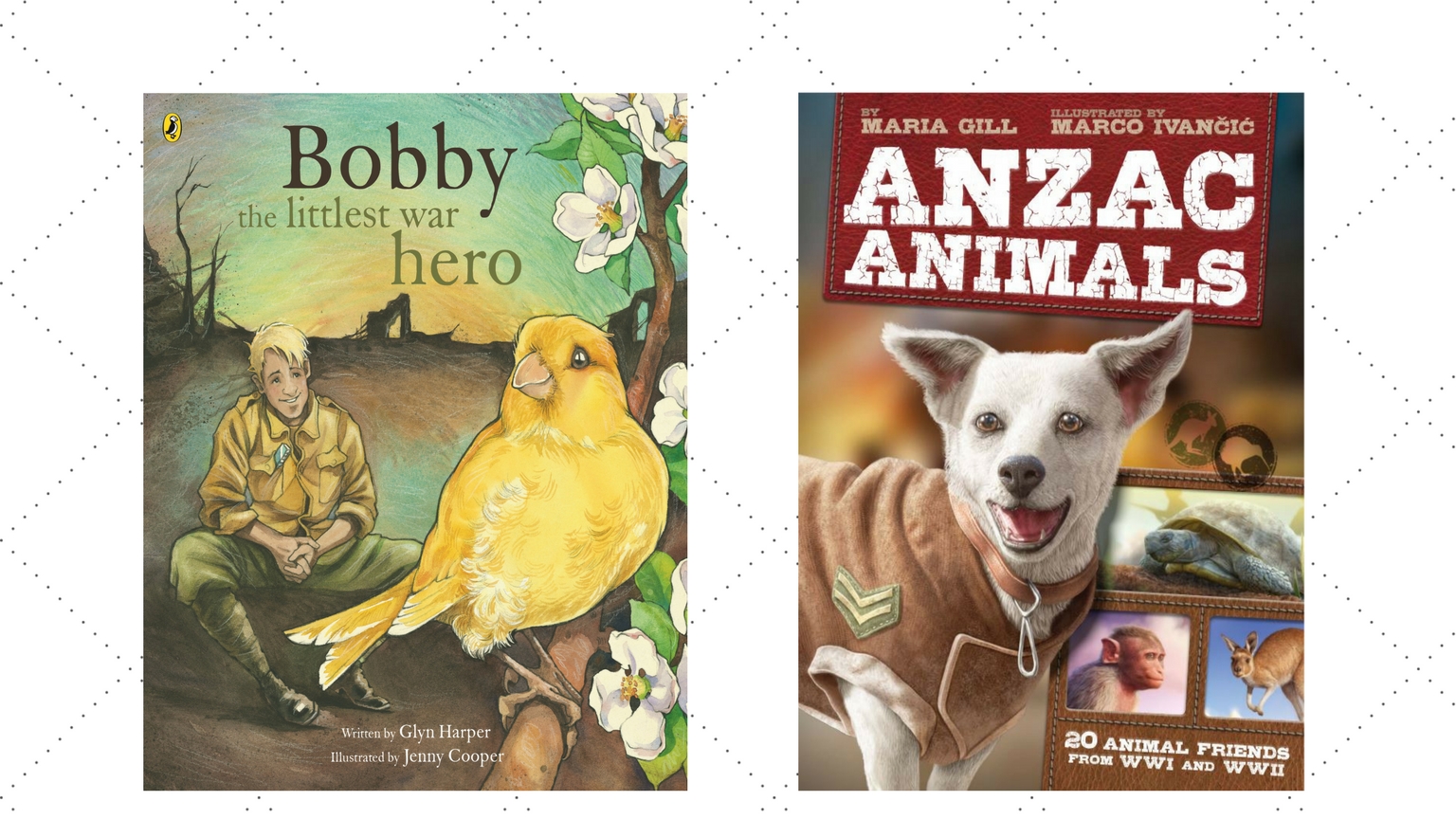
Maria Gill: Glyn, this is certainly not your first children’s animal war book, with The Donkey Man published in 2004, Roly the Anzac Donkey in 2015 and Bobby the Littlest War Hero due for release this month.
What made you pick these stories out of all the research you must read as a professor of war studies at Massey University and also as a prolific author of military books for adults?
Glyn Harper: I had written my first book for children, Mission to East Timor (Reed Publishing, 2002) on the New Zealand military deployment to East Timor. It had been well received and my publishers asked if I could write another story.
For some years I had wanted to write about Richard Henderson, a New Zealand medic at Gallipoli, who had used a donkey to carry wounded soldiers. The Australians had a well-known war hero called Simpson and Richard Henderson had often been confused with Simpson. So I wrote The Donkey Man and aimed it at a young audience, getting their attention by tell the story through the eyes of the donkey. The story was updated in 2015 as Roly the Anzac Donkey.
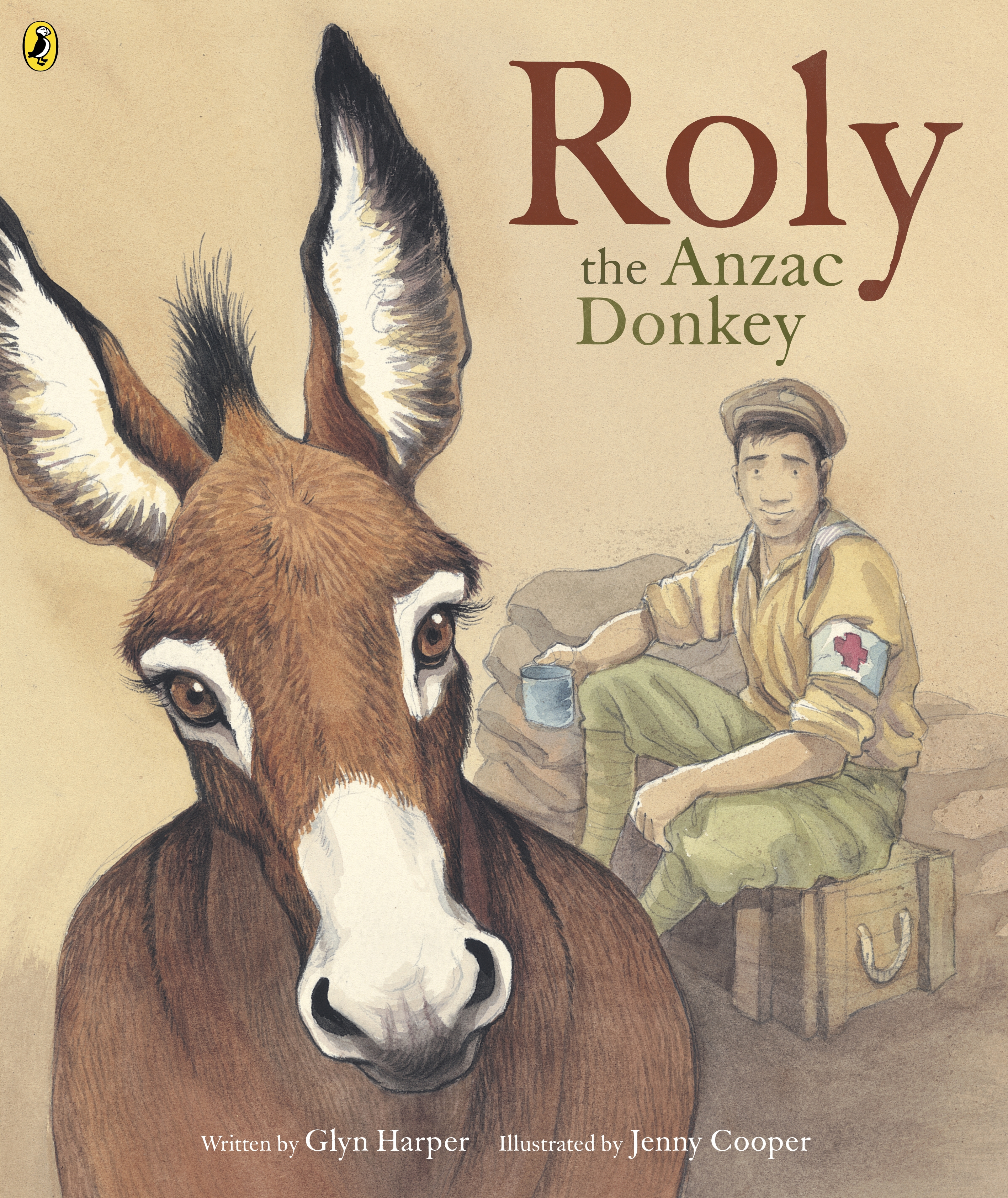
In my research as a military historian, I often find material that I think will make an interesting story for children. This was how my book Gladys Goes to War originated and also Bobby’s story. For some time, I had wanted to do a story about the tunnellers of the First World War so I was on the look out for good material. Somebody sent me a newspaper article about a canary named Bobby that had survived several gas poisonings. This was the story that I decided to develop and use and was published this year as Bobby, the littlest war hero. Once again, Jenny Cooper’s illustrations really bring this story to life.
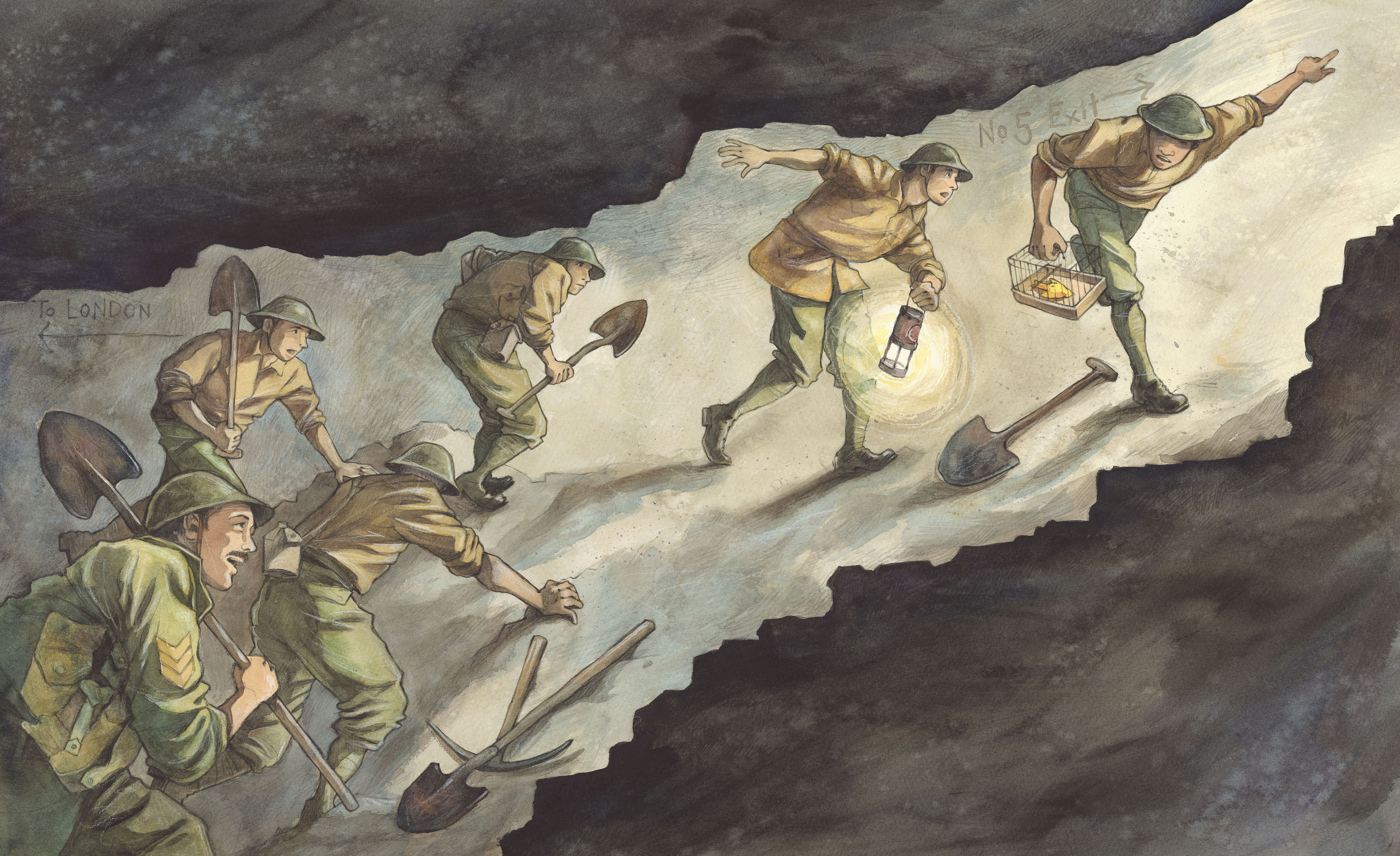
Maria, you have written many books on a wide range of topics including your two most recent books, which have a war theme. How do you choose your stories?
M: When I first started writing, I wrote about subjects I was familiar with and passionate about, such as New Zealand’s environment and native animals, like in Toroa’s Journey, which came out last year. Having been a teacher, I also wanted to write stories that would inspire children and I’ve always loved reading biographies, hence New Zealand Hall of Fame, and New Zealand Sports Hall of Fame.
But then I noticed that Anzac books were really popular. Anzac Heroes also followed on nicely from the two biography books I had just written. When it won the non-fiction category in the New Zealand Book Awards for Children & Young Adults, as well as the Margaret Mahy Book of the Year award, we knew it made sense to follow it with another similar title.
Anzac Animals comes out this March and once again features Marco Ivančić’s outstanding illustrations, as well as Luke Kelly’s striking design work.
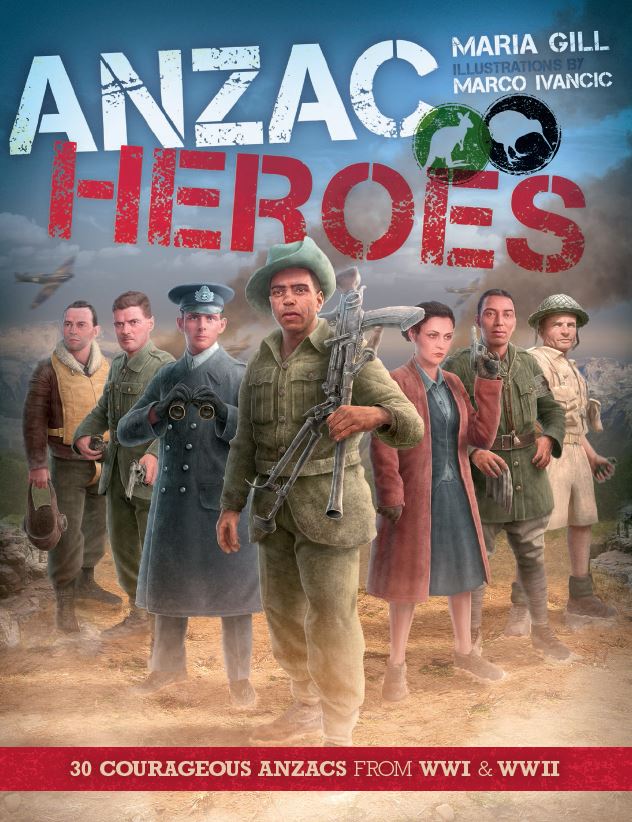
M: Glyn, one of the things I noticed when researching Anzac Animals was how there was very little information about the animals that went to war. There might have been a few lines in an original diary or a letter from the war, or a caption to a photo in a newspaper. I found I really had to put my journalist hat on to tease out more information. In the end I tried to find information about a particular soldier and his unit, which then gave me details about what was happening around the animal.
Did you find the same when investigating Roly’s and Bobby’s stories and where did you go looking for more information to create a story?
G: I did find information lacking on both the Roly and Bobby stories. I do a search for the information and if I can’t find it I will make it up, but try to keep as close to the facts as possible. For example, Roly is actually a made-up name. No one really knew the name of Richard Henderson’s donkey and I could not find it anywhere. Simpson’s donkey we know was called Murphy, so I wanted a name that sounded similar and settled on Roly.
Also, there was no record on how the original canary Bobby was revived after each time he detected gas in the tunnels. I did ask a retired Professor of Veterinary Science but he had no idea how it could be done. So I had to use my imagination on that one. After all, it is the story that counts, not the things we don’t know.
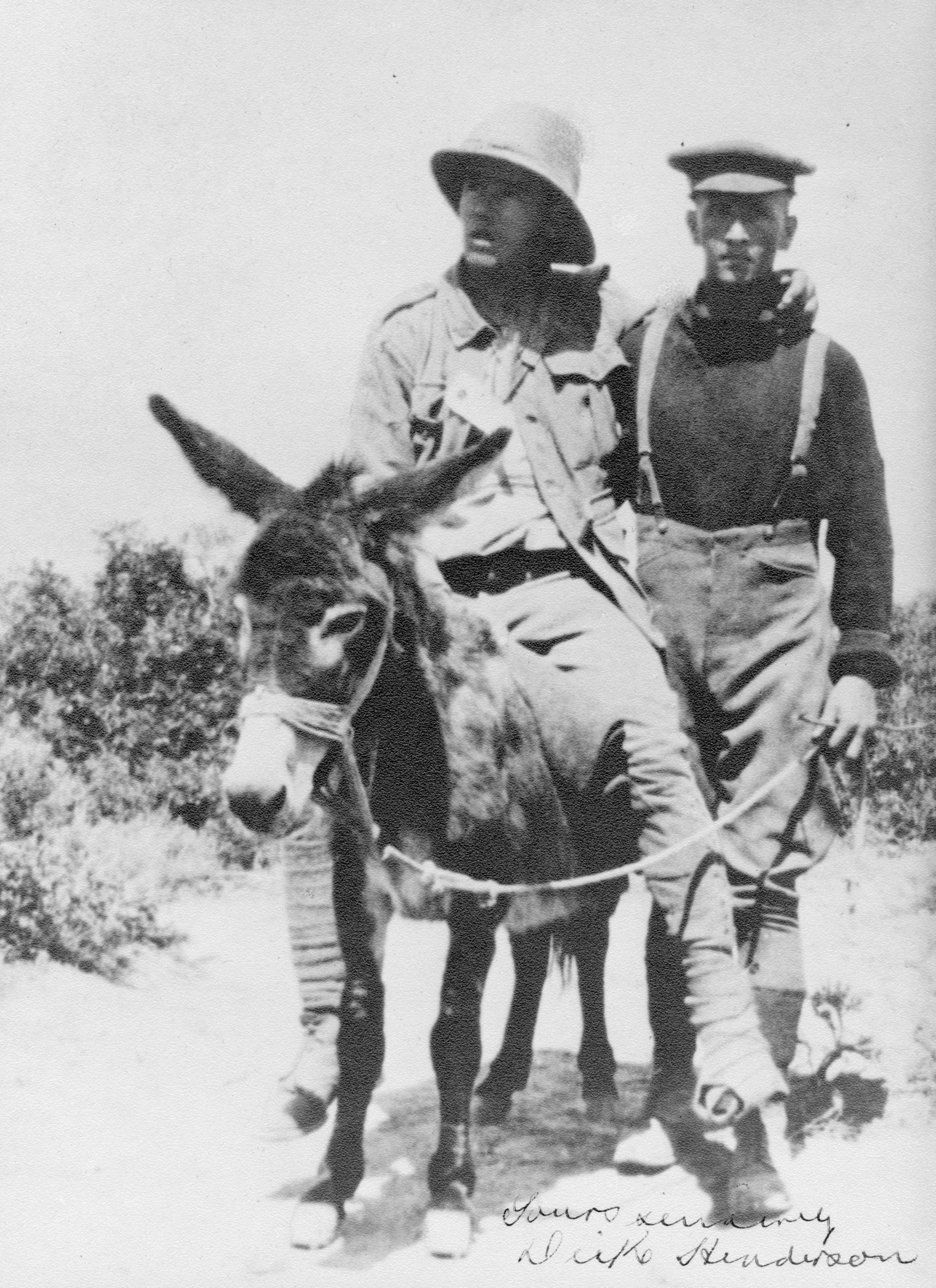
G: Maria, I’ve noticed that many writers for younger people are either teachers or ex-teachers. Both you and I are a case in point. Why do you think that is, and do you think it gives an advantage as a writer?
M: I think teachers and librarians know their market really well. They’re used to talking to children, know what they are reading, and when it comes to doing author talks they’re very comfortable with presenting to classes or whole schools. So, yes, I do think we have an advantage. Skills I learned when teaching help me when planning my presentations. During author talks, I ask lots of questions, get some of the children to role-play a particular story, show images on a PowerPoint presentation and display props such as medals, maps and relevant models or stuffed toys.
When you’re doing an author talk and speaking about the Anzac stories, how do you make your talk interesting and interactive for your young audience?
Glyn: This is a tough one and it has taken me a little time to get it working well. What I tend to do now is take some things along to show the group. They could be artefacts like shell fragments or spent bullets or even some photographs. I start with this and then talk very briefly about my writing. I try to keep this part short and no longer than ten minutes. Then I ask if they have questions or stories they’d like to share. I find this works well especially for younger children. I did this recently with a class of about 25 children. When I asked them if they had questions or stories to share, every single hand went up. I found that quite rewarding.
What I tend to do now is take some things along to show the group. They could be artefacts like shell fragments or spent bullets or even some photographs.
Your latest book is on Anzac Animals. How did you select the animals you feature in the book?
M: I drew up a list quite quickly to present to my publisher Scholastic, but when it came to researching the animals, some had to be dropped because there wasn’t enough information about them or I’d find a more interesting story about a similar animal. For example, I really wanted to write the story of Major Major, the dog mascot for the 2nd NZEF, but his story was so sad. I cried while writing it. His first master died in the first battle, and Major Major stayed behind a ridge waiting for him to come back. His next three owners were either killed or captured, and then the dog died several weeks before the war ended.
Lynette Evans, Publishing Manager from Scholastic, had asked that I not make the stories too sad. ‘I don’t want to use a whole box of tissues while reading it,’ she said.
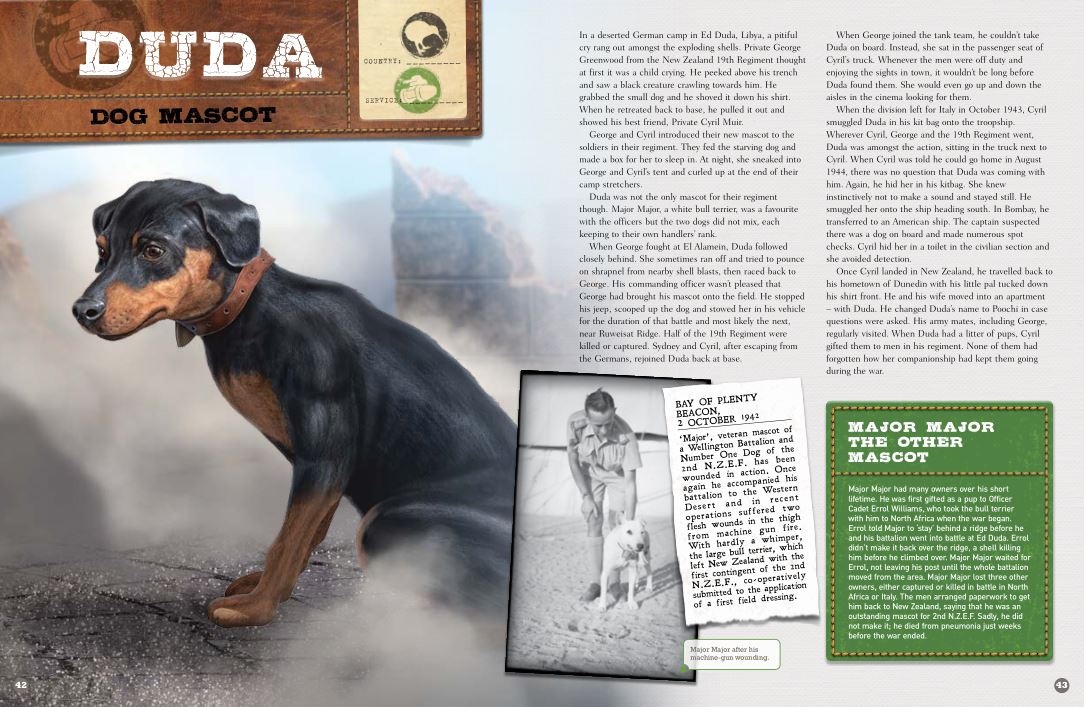
I reduced Major Major’s story to a side bar and instead wrote about Duda, who did return from the war, as well as several dogs that were smuggled into Australia or New Zealand. I also chose two horses that survived the war: Bess and Bill. For some of the animals I didn’t say what happened to them at the end of the war so the story could end on a high note instead. But there are plenty of mischievous and funny stories too, such as the mule who bit the soldier’s bottom and could kick from any possible or impossible angle, and the monkey who stole the captain’s prize pipe, and Lulu the chicken who pinched the men’s secret stash of chocolate.
Kids will take away from the stories how much the men loved their mascots or respected their own working animal and how it often helped them get through the war. I noticed a similar thread in your animal war books. Can you please tell us about your latest book Bobby, the littlest war hero?
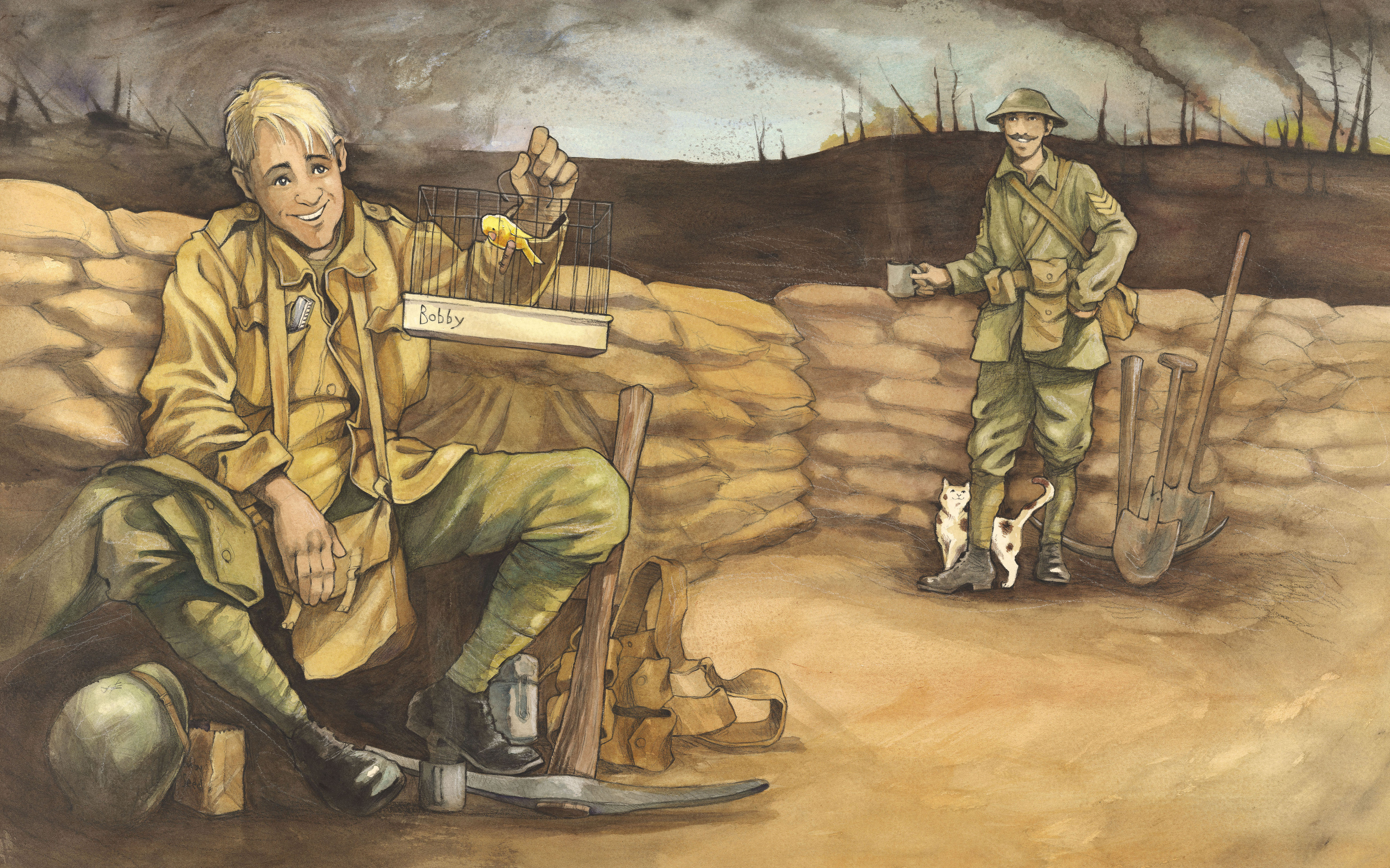
This is something I have noticed in my adult books too. The respect and love soldiers had for their working animals was incredible. They really did form a tight-knit team. This was there in the Roly story and it is in the Bobby story too.
Bobby is a tiny canary who works with a group of tunnelers in the First World War. Bobby is used to detect dangerous levels of gas in the tunnels and he is really good at doing this. His handler, Jack, works with Bobby and admires the work Bobby does. Bobby actually saves their lives several times. But Jack also worries about the dangers involved for Bobby and whether the group might be asking too much of him. In the end he decides to do something about this.
One for both authors: Why are animal war stories popular and why do they appeal to children?
G: Most children love animals and know something about them. Dogs, cats, horses and donkeys seem to be especially popular. The ‘hook’ that I use to interest children in my stories is to either feature an animal I feel they will like, or to use someone around their own age to tell the story. The animal stories have been really well received, especially the Gallipoli donkey story. I notice that a lot of other children’s writers use this technique as well, probably because they know the content will be of interest to their target audience.
M: It is evident from photographs that military people loved the animals in their care – New Zealanders and Australians are big animal-lovers. I believe books about animals encourage children to feel empathy towards other beings. It can also help them process grief, understand death, and learn about historical events without realising they’re learning something about the past.

The World War One commemorations are ending this year; what other excellent children’s animal war books have you seen that have just come out or are being released soon on this theme?
G: I think we have been incredibly spoilt for choice regarding the range and quality of books that have been released to coincide with the commemorations.
To name just a few:
- The Red Poppy by David Hill, illustrated by Fifi Colston
- Torty and the Soldier by Jennifer Beck, illustrated by Fifi Colston
- The Anzac Puppy by Peter Millet, illustrated by Trish Bowles
M: From Australia I would also include:
- My Friend Tertius by Corinne Fenton illustrated by Owen Swan
- Digger, the Dog Who Went to War by Mark Wilson
- Flapper, VC by Mark Wilson
Not to mention all the other excellent Anzac books that have been published over the last couple of years. Let’s hope they keep being published – schools study and commemorate Anzac Day every year and will stay relevant for years to come. Animal war books show the more compassionate side of the war.
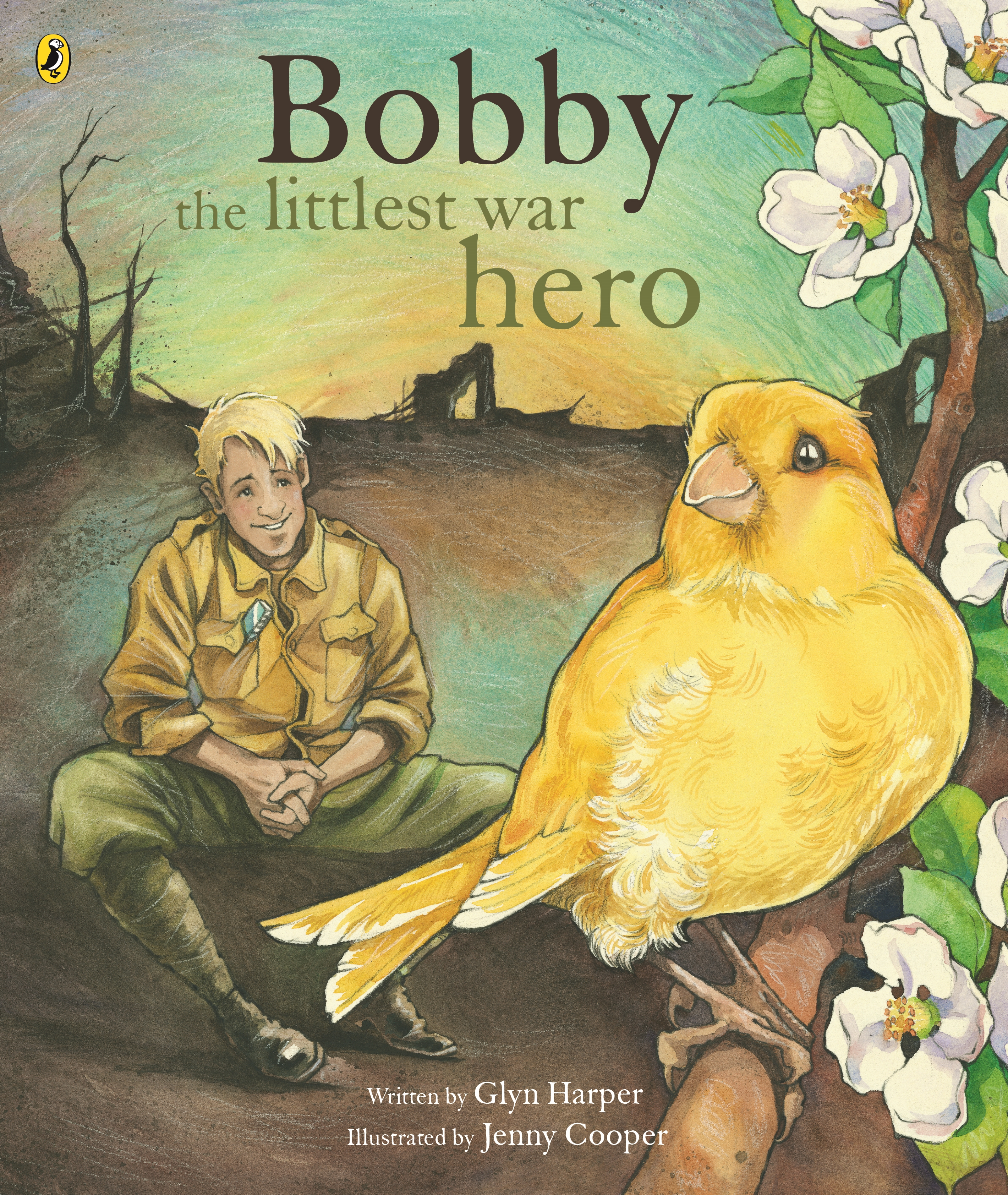
Bobby, the Littlest War Hero
By Glyn Harper
Illustrated by Jenny Cooper
Published by Penguin Random House
RRP $19.99
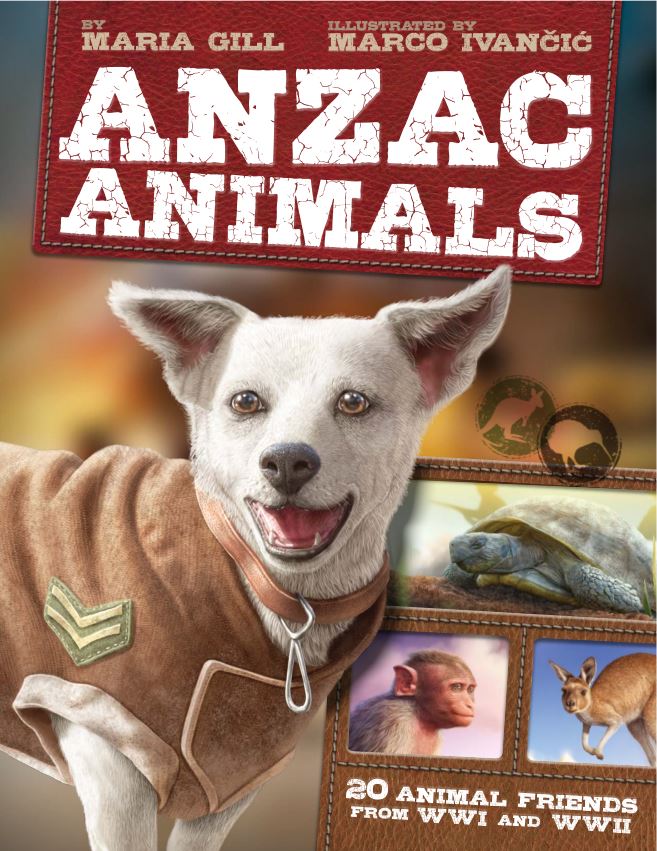
Anzac Animals
By Maria Gill
Illustrated by Marco Ivančić
Published by Scholastic NZ
RRP $29.95

Maria Gill
Maria Gill has written 60 children’s books for the retail and education, local and international markets. Her book Anzac Heroeswon the Margaret Mahy 2016 Book of the Year prize. Many of her books have been shortlisted for national awards and been selected as Storylines Notable books. NZCYA shortlisted title from earlier this year, New Zealand Disasters: Our Response, resilience and recoveryillustrated by Marco Ivancic (Scholastic NZ) includes historical, contemporary, and recent disasters including the Covid-19 pandemic. This month saw her publish Remarkable animal stories from New Zealand and Australia, illustrated by Emma Huia Lovegrove (Scholastic NZ.)



